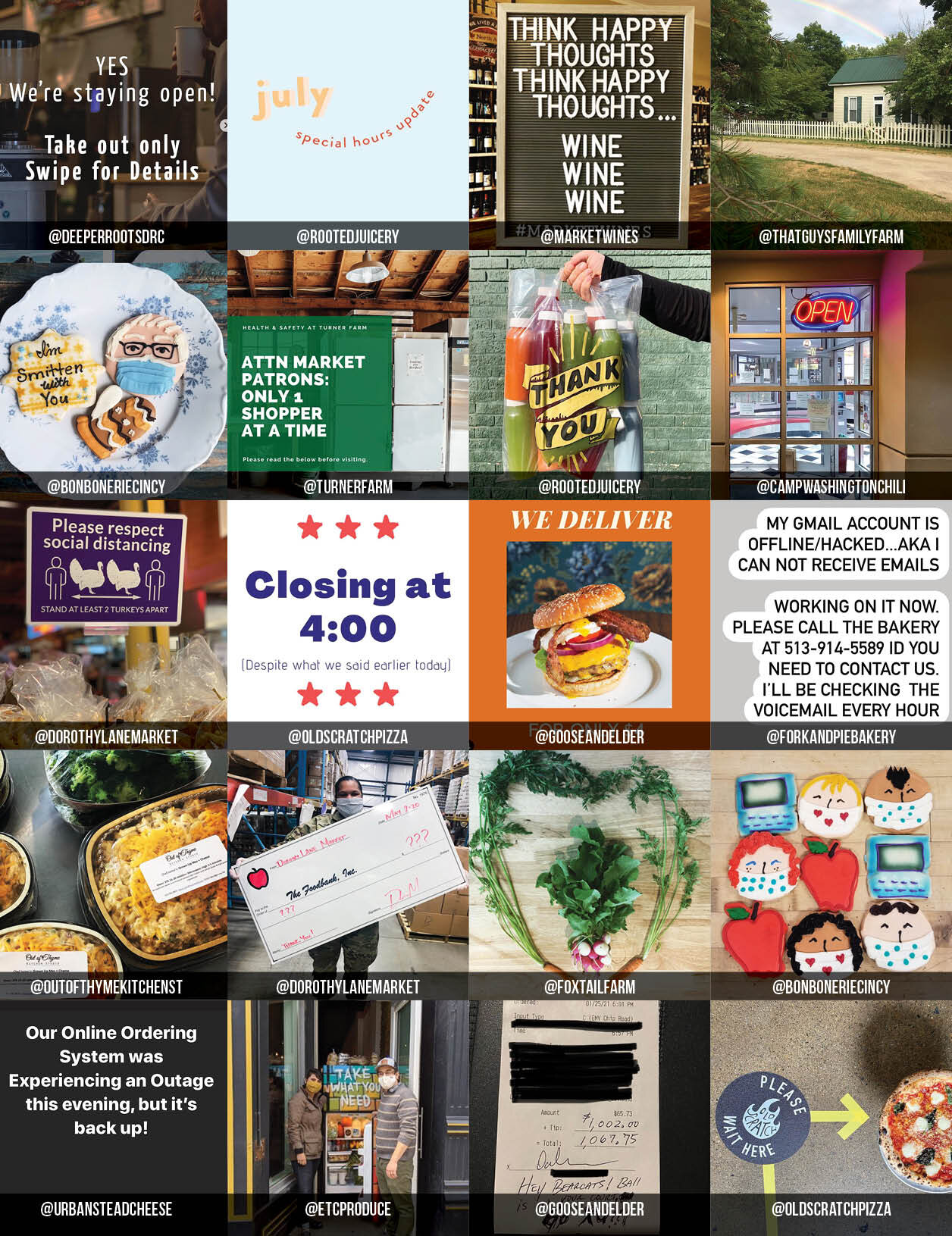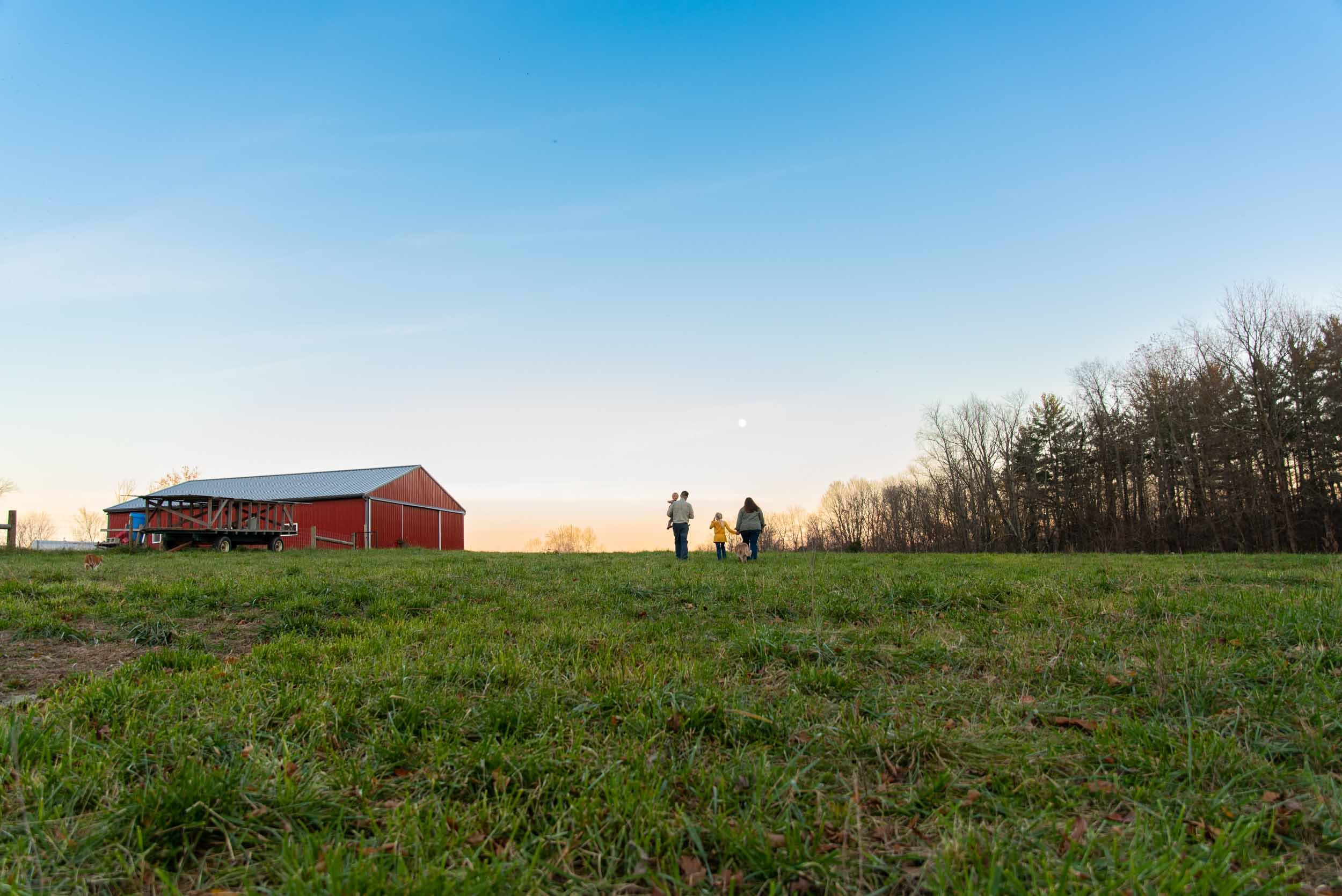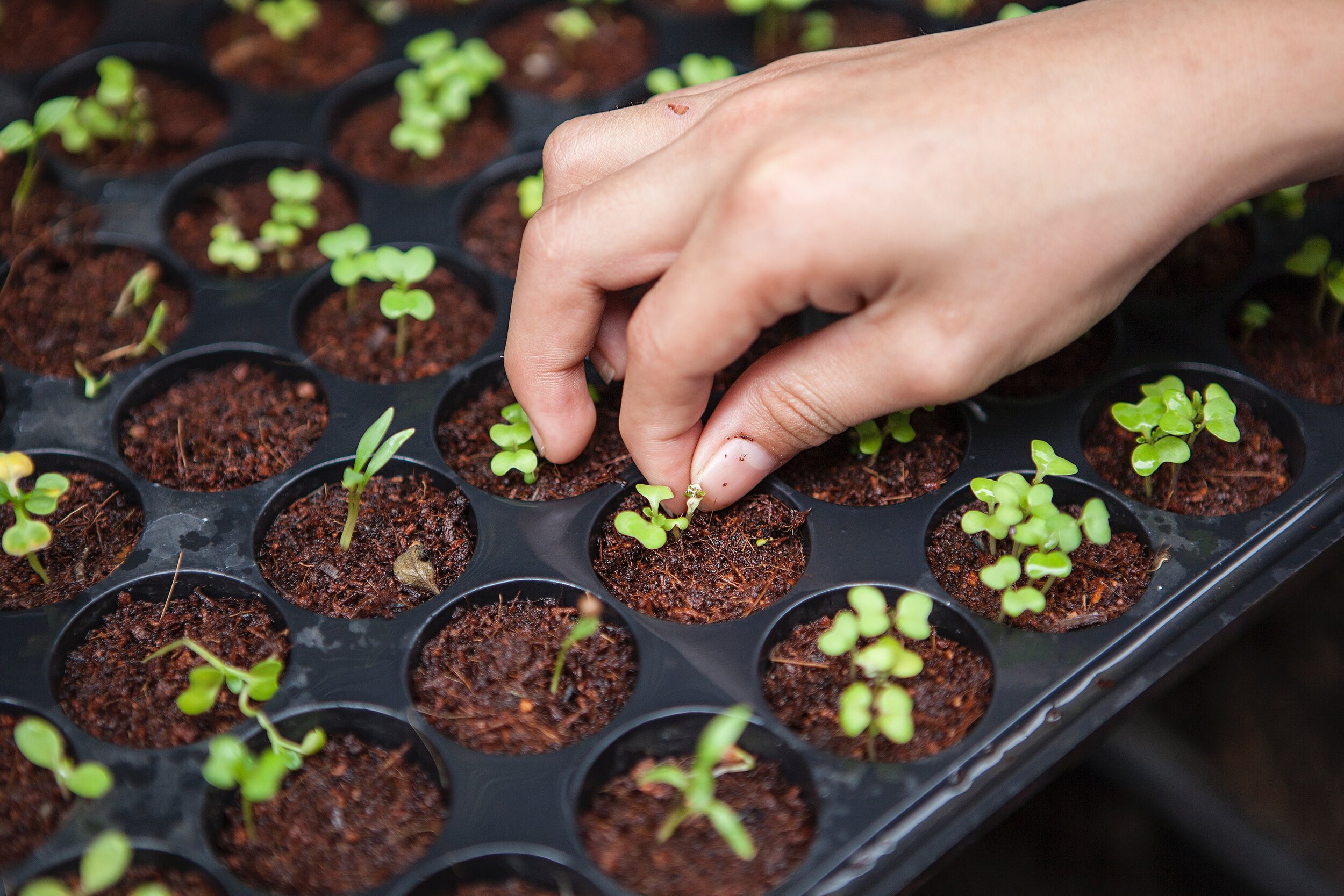What a Year

2020 saw a boom in local food sales as families cooked at home, farmers adapted, artisans got creative, and retailers made us feel safe. Will this embrace of local food continue? It’s up to us.
At midnight on Monday, March 23, 2020, the stay-at-home order issued by Ohio governor Mike DeWine went into effect.
By Sunday, March 29, Madison’s at Findlay Market had experienced an astonishing week of sales. “The first week of shutdown was insanely busy—like Thanksgiving or Christmas,” says Frank Stier, co-owner of the small independent grocer that stocks local and specialty produce and staples. His partner and co-owner, Laura Riley, adds, “Suddenly people were working from home and kids were home from school, so they needed food in the house. They were stocking up.”
The story of the pandemic’s effect on our local food system—the story of the system itself—looks a lot like that week in March 2020. Disruption. Pivot. Opportunity. Repeat.
On the face of it, the 15-month stretch since the first cases of Covid-19 were reported in Ohio, Kentucky, and Indiana could have been an unmitigated disaster for local food. And to be sure, it was catastrophic for many businesses in the region: restaurants shuttered for good, an untold number of enterprises never got started, personal finances were wrecked, lives were changed. As of late April, nearly 40,000 residents in the three states had died.
In the shadow of those perils, the pandemic has also accelerated the pace of positive change in local food. It’s created new pathways for growers, makers, and retailers. It’s opened consumers’ eyes and changed some habits. And it’s emphasized longstanding issues that will require ongoing work to resolve.
Adapt, Hustle, Respond
As shutdowns were issued across the Ohio Valley region, farmers, makers, and retailers were in shock. Restaurants closed, retailers braced for a steep drop in traffic, farmers and food artisans lost sales channels.
Findlay Kitchen, which rents commercial culinary space to food entrepreneurs, epitomized the immediate impact. “The stay at home order happened, and our hourly usage was cut in half overnight,” says Findlay Market director of food innovation Marianne Hamilton.
“But after that initial hit, we kicked into gear to figure out what we could do. People are at home and need food, so how can we get food to the people?”
Across the Ohio Valley’s food economy, everyone was asking the same question: What can we do to get food to people?
Giving Shoppers Confidence
We all experienced the challenge and anxiety of food shopping in those early days, and small retailers and farmers’ markets took painstaking steps to make customers feel safe. That included reducing the number of shoppers indoors to allow for social distancing and managing traffic flow. “We had a lot of people tell us, ‘I don’t feel safe going into big box stores, but here at Findlay Market things seem fairly controlled and I feel comfortable,’” Stier says.
Farmers’ markets adapted, too, and their outdoor environments were especially beneficial in the early days of the pandemic. Market managers quickly adopted safety protocols, says Covington Farmers’ Market manager Alexa Abner. “With the NKY Health Department and the Community Farm Alliance, we created a Covid-19 Operations Guide which created a standard of health and safety our customers could feel confident in and that the market could be held accountable for,” she says. “2020 was the year that made me realize we really are a creative and resilient bunch with a knack for problem solving.”
Online Ordering
Major retailers saw online grocery shopping explode during the shutdown; these were existing systems that simply ramped up to handle demand (but good luck getting toilet paper or flour from your Kroger online ordering app). As the pandemic emerged, Findlay Market was beta testing an ordering app developed by a local tech startup called Food Forest. “The app was half built; we were testing it among a handful of friends with just a couple of orders per day,” says Hamilton. “Overnight we went to 80+ orders a day coming in, an insane trajectory.” Findlay Market staff scrambled to assemble a team to fulfill orders in a makeshift staging site inside a vacant storefront.
At the same time, local entrepreneur Sean Arthur was beta testing his new online ordering platform called Farmnivorous, which is designed to allow customers to shop from multiple local farms and producers and pick up orders at a designated location. He’d just partnered with the Northside Farmers’ Market and launched a bare-bones site in March 2020. “If you want to grow the share of consumers who will shop locally vs. at a traditional grocery, you have to make it more convenient,” Arthur says.
Online ordering helped introduce new consumers to local food outlets. Stier notes: “We recently had a customer tell us, ‘I didn’t know much about Findlay Market before this happened, but a friend told me about the app so I started ordering. Now that I feel comfortable coming out I had to come in and meet you because I love everything you have.’”
Restaurants as Retailers
Walloped by the shutdown orders, restaurants faced impossible decisions. Close for the duration? Revamp for takeout? Or something else?
Alice Chalmers had a front-row seat to witness restaurateurs’ and chefs’ anguish. The founder of Local Food Connection, an aggregator/distributor of farm-fresh and artisan food (now part of the foodservice supplier Creation Gardens), says about 95% of her business serves restaurants and institutions. “In one week last March our business went down by 80%.”
Many restaurants shifted to takeout; others emerged from the shutdown with reduced indoor capacity and new outdoor seating. But a big and perhaps lasting shift, Chalmers says, was that bars and restaurants began reselling food to consumers. Think: take-and-make meal prep kits, food boxes, and pantry staples. Dee Felice Café in Covington and Urban Stead in Evanston were among those making the move.
“If a restaurant wasn’t already doing takeout, it was a harder pivot for higher-end farm-to-table places,” Chalmers says. “So we started delivering local food products for retailers or restaurants to resell, and creating food boxes like meat boxes for grilling season, or CSA-style produce boxes.”
Alternative Channels
Hamilton calls alternative sales channels “the huge pivot of 2020,” and they took many forms. Caterers who served corporate meetings and events had to get super creative—fast. “Soul Secrets is a great example,” Hamilton says. “Candice [Holloway, the owner] took a pause, realized that it wasn’t going to resolve overnight, came back with a different strategy, and started reaching out to her corporate clients like Tri-Health. They ate it up; she delivered many, many meals to employees’ homes for Zoom team-building events.”
Other makers shifted to wholesale, getting their products onto shelves at small retailers like ETC Produce & Provisions and Harvest Market. The Empanada’s Box launched during the height of the pandemic with a wholesale business model, because pop-ups and festivals weren’t happening. “They started selling to small retailers, which got them brand recognition,” Hamilton says. “They’re much better positioned now with a great following as they start to do pop-up booths and events.”
Too, farms began selling directly to consumers—by building their own online stores or starting or expanding on-farm markets. “Pretty quickly, when people started seeing shortages of meat in the grocery store, they started searching online for local farms,” says Jess Campbell, who raises cattle, sheep, hogs, and chickens on her Carroll Creek Farm in Waynesville, OH. Campbell sells at the Second Street Market in Dayton; when it was completely shuttered for several months in 2020, the farm’s website and onsite Meat Retreat store became her sole outlets. “I looked at Google Analytics, and there was an insane number of searches for locally raised meat. Then we started getting bombarded and sold out of product.”
DTC sales, Chalmers says, sparked unprecedented collaboration among farmers and producers. “A farmer that grew just vegetables would buy local eggs and milk through Local Food Connection so they could provide a broader offering to their customers,” she says. “That makes farmers another delivery point in the system because they have their own following, and they’re supporting other farmers too. That’s been a super cool development.”
Serious Roadblocks
As farmers and makers adjusted production and ramped up new sales outlets—and more consumers began seeking local products—two big obstacles remained: staffing and supply chain.
Especially in the early weeks of the pandemic, Riley says, people were uncomfortable working in the retail environment, so hiring and keeping staff was a challenge. But retailers like Madison’s and ETC quickly picked up folks who’d been laid off from the hospitality industry.
And the supply chain hiccups that hit national grocers (remember the barren produce and meat cases last spring?) affected the local food system too. “Early on in the pandemic, there wasn’t a lot coming from local farms because it was March,” Riley says. “On the conventional side, we’d send back 50% of the produce we got in because it had sat in the warehouse because of delivery issues and had gone bad.” Once local farmers started growing, more and more produce became available to independent retailers.
Processing facilities, a key part of the supply chain for local meat producers, were a real pressure point in the system. Everyone was at or beyond capacity. As Carroll Creek Farm’s sales of freezer beef and individual cuts soared by 400% over a comparable period in 2019, Campbell called every processor in Ohio to find one that could accommodate her business. “The big lesson is that we need to have multiple processors,” she says. “We were lucky in that we built new relationships with processors that we’re still working with.”
Ongoing Challenges
As life begins to creep back to a semblance of normal this summer, staffing and supply remain challenges for Ohio Valley’s food system. Walk into any bar, restaurant, producer, or retailer these days and you’ll see a “help wanted” sign in the window. It’s been widely reported that many workers in the hospitality business who were laid off a year ago have moved on to other opportunities and won’t return as servers, line cooks, and bartenders.
More processors, packers, aggregators, and distributors that get items from farm rows and fields to kitchens and shelves—the “to” in farm-to-table—are still sorely needed in our local food economy, although businesses like Local Food Connection and ETC meet a portion of that need. Meat producers like Campbell expect processing to be a bottleneck for the foreseeable future.
Perhaps the biggest ongoing obstacles to a widespread embrace of local products are cost and convenience. Not surprisingly, Farmnivorous’s Arthur sees technology as a key to unlocking both problems. The pandemic forced many farmers, makers, and markets to adopt tech that big food brands have used for years, such as online ordering systems and social media marketing. Still, there’s work to be done to make local food more convenient, so consumers can shop from multiple farms and producers in one transaction, and then arrange convenient pickup or delivery. “I’d love to see a world where you have breweries or caterers or other businesses creating farm-to-table pickups everywhere,” Arnold says.
“My crystal ball says that if the tools we’re using today are the same that we use five to 10 years from now, then consumer behaviors will revert back to convenience and cost,” Arthur continues. “But I think the tools will change. Farmnivorous is just one example; there are a whole lot of things coming together to make the local food system more accessible and convenient. As that happens, more and more people will get involved and behaviors will change.”
Online ordering represents one solution, but local food remains inaccessible (due to financial and other barriers) to far too many of our neighbors. Chalmers notes that schools are critical access points for healthy food for families across the region. Local Food Connection is working to build relationships with institutional buyers like Cincinnati Public Schools, which benefits farmers as well. During the pandemic, CPS was the hero of a quiet but powerful success story. “CPS is one of the largest advocates in our region with their local food purchasing program,” Chalmers says. “We had farmers plant for CPS in March in anticipation of demand in August, and when that wasn’t happening, all that food was redirected to family food boxes instead of cafeterias. I can’t talk enough about how dedicated their food production group is to highly nutritious local food. Those programs kept us and our farmers going, no doubt about it.”
Momentum, Optimism, Hope
Overwhelmingly, an optimistic vibe emerges in conversations about our local food economy. Everyone’s ready to catch their breath, then move forward with confidence. Growers, makers, and sellers collectively express hope that the pandemic has opened consumers’ eyes, expanded their palates, and changed their shopping habits in favor of local products.
“For years, we’ve lived in a safe food system that’s just in time and always there and consistent,” says Campbell. But the pandemic changed that. “For people who remember those empty store shelves, that scarcity will change some of their behaviors going forward.”
Consumers who’d perhaps considered buying local food but had never gotten around to it suddenly had reason to: Maybe they had extra time to visit a farm stand, felt safer shopping outdoors, or discovered new products through a shopping app. Campbell says: “Trying a local product over a commodity for the first time and tasting the flavor and experiencing the freshness is a big lift for local food. If you take away the price, and you’re using only your senses, it’s not a hard decision.”
And certainly, we’ve all been cooking at home way more than we normally do during these past 12+ months. “I think consumers have picked up a lot of new cooking skills and realized that shopping for fresh ingredients from farmers and artisans you know and trust is a much more joyful experience than shopping in a big box store or having plastic-wrapped meal kits delivered in boxes,” Abner says.
That proved to be the case for Ashley Adams and her family in Centerville, OH. When her company went virtual last spring, Adams moved home from New York City to live with her parents. They quickly shifted from eating out a couple of times a week to cooking at home, with the occasional takeout dinner. “Until supply chains were disrupted everywhere, we never really thought about where food comes from and how it gets here,” she says. “We started going to Second Street Market, not only as a way to support local farmers, but to enjoy being outdoors.
“We’ve built a new food-shopping routine around going to downtown Dayton on Saturday mornings,” she adds. “We feel even more connected to the community and feel good about knowing where our dollars are going.”
Anecdotal reports and real data suggest that more and more consumers like Adams seem to be embracing local food. Farms like Carroll Creek and Carriage House saw booming business at their on-farm stores. Stier notes that Madison’s saw an “absolutely incredible” increase in sales in 2020. Abner says that while 2020 traffic to the Covington Farmers’ market was down by about 20% from 2019, gross collective sales for market vendors increased 142%, coming in just under half a million dollars. “It’s logical to assume that visitors began to view the Covington Farmers’ Market not as a grocery store supplement,” she says, “but as a grocery store alternative.”
The year 2020 taught us the value of slowing down, using our hands, living a bit more simply—because we had to. “People started gardening and realized how hard it is to grow food,” Chalmers says. “It’s easy to plant in the spring, but then you have to weed and water.
“I’m hoping that out of this there’s a newfound respect for the challenges of farming and a new willingness to pay the actual price for real food,” she continues. “Maybe we’ll be buying less and buying better. That’s my wish. If that’s what comes out of this, it would be such a game-changer.”
What Can You Do To Support Local Food?
Buy locally grown and made products from locally owned retailers.
Patronize your favorite independent restaurants.
Discover the restaurant/grocery hybrids that have emerged, such as Dee Felice Market, Spoon Kitchen & Market, and Butler’s Pantry Market & Café.
Pick up your food order instead of using a delivery app, which takes a chunk of the restaurant’s profit margin.
Tip restaurant servers well.
Follow the establishment’s rules regarding safety protocols with grace.
Bring a friend to a farmers’ market.
Spend 10% of your family’s food budget on local products.
Don’t break the habit
If you want local food all year, tell local growers that you’ll support them in the winter too. Local meat, fresh and hearty greens, root vegetables, squash, and apples are available during the coldest months.
Embrace seasonal eating at home
Create menus that get you and your family excited about the local items that emerge with each season.





